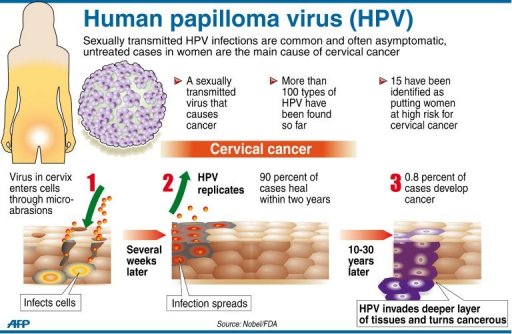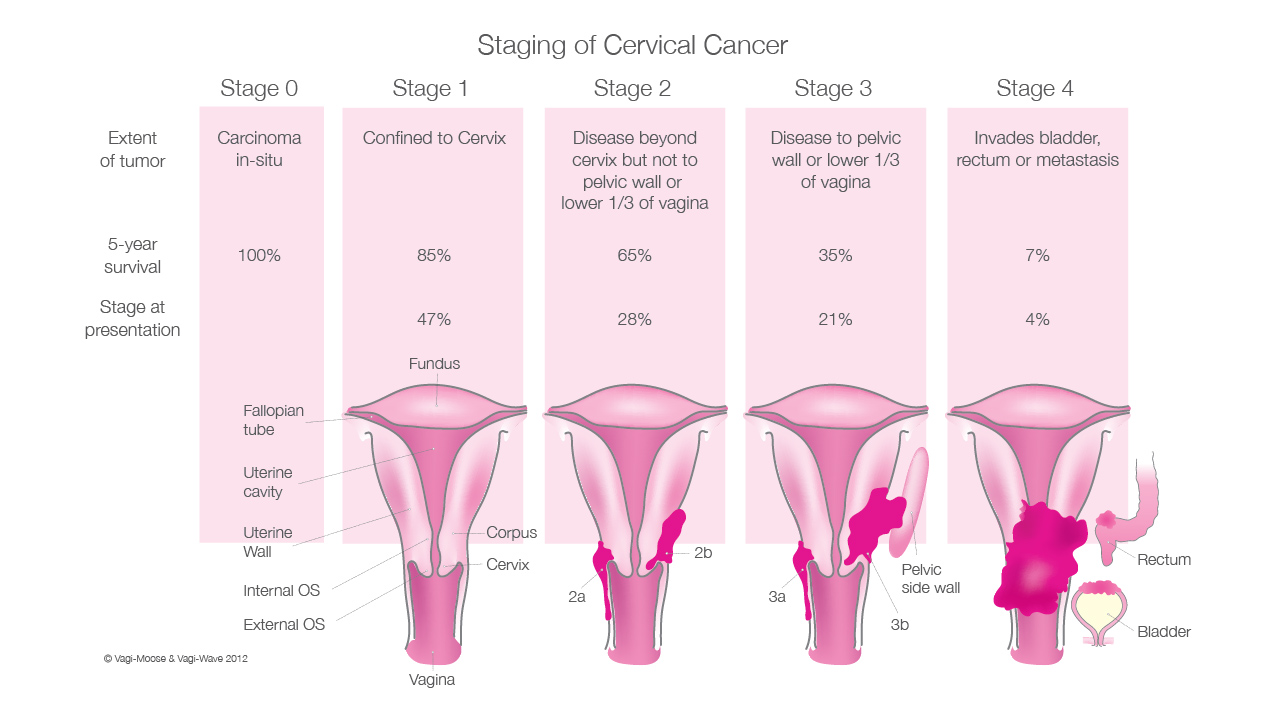I
choose to write about cervical cancer because Mrs. Henrietta Lacks’ was
diagnosed with cervical cancer in the year of 1950. After battling with the cancer for eight
months, Mrs. Lacks died at the age of 31 years old in 1951. In the early 1900s,
there was not much information about cervical cancer or how to treat it.
Because the symptoms of cervical cancer appeared in the later stages and women
were did not have pap smear test done, the cancerous cells would spread in the
body affecting the other organs. By the time doctors would diagnosed the
patient with cervical cancer, little could be done to cure it. Doctors would
misdiagnosed the patient and often did not know how it should be treated. It is very important to have a Pap smear test
done every year. By doing this, the patient will be able to detect the cancer
at an earlier stage and successfully treat it.
Cervical Cancer
Tuesday, December 2, 2014
Monday, December 1, 2014
Cervical Cancer
What is Cervical Cancer?
How many women are affected with
Cervical Cancer?
Cervical
Cancer is a disease when the normal cells of the cervix have begun to turn into
abnormal cells. After some time, these cells will begin to develop into
malignant tumors and can spread throughout the body. The cervix, the lower part
of the uterus, is an opening that connects the vagina and the uterus.
The
Different Types of Cervical Cancer.
There
are two types of cervical cancers: invasive carcinoma and noninvasive
carcinoma. Invasive carcinoma is when
the cells appear on the surface of the cervix, while noninvasive carcinomas
does not.
Studies
have shown that cervical cancer is “the second most common type of cancer found
in woman worldwide and affects nearly five hundred thousand women each year”
(Savard). If the cancer is left
untreated, it can spread to other parts of the body, such as the liver or lung
and become deadly.
Causes of
Cervical Cancer
The
chances of developing cervical cancer increases when a woman has been
previously infected with a sexual transmitted diseases such as HPV and
Chlamydia or has a family history of the disease.
Human
Papillomavirus or HPV is a sexual transmitted disease that spreads from skin to
skin contact with an infected person. There are many different types of HPVs
and certain HPVs can cause warts to appear on the surface of the skin.
Different types of HPVs can cause certain cancers, such as cervical cancer.
Chlamydia
is another sexually transmitted disease that is also linked to cervical cancer.
Chlamydia affect the reproductive system in the body and can cause infertility
in women if left untreated.
Having a family history of the disease can
also increase a woman’s chances of developing cervical cancer.
What is a
Pap Smear Test?
Because
there are not many symptoms to cervical cancer, it is very important to go see
an OBGYN and have Pap smear test done every year. A pap smear,
a gynecological exam, is where the doctor takes a sample of a woman’s
cervix tissue cells and examines them under a microscope to tell if they are
cancerous. Although a pap smear test cannot detect whether or not a patient has
HPV, it can detect if the cells of the cervix are cancerous or not. By having a
yearly pap smear examine by a doctor, it will be able to detect the cancer at
an early stage and increase the chance of finding a cure.
The Symptoms
The
symptoms of cervical cancer often appear in the advanced stages opposed to the
earlier stages. The most common symptoms of cervical cancer includes, but not
limited to,
·
vaginal bleeding
·
pelvic pain
·
lower back pain
However,
because these symptoms are closely related to other diseases, such as
uterine cancer and cervical polys, women are often misdiagnosed or diagnosed at
an advanced stage. This is why it is important to have yearly visits and
Pap smear test done at a gynecologist office.
Treatment
The treatment of
cervical cancer can be successfully be done if it is found in the early stages.
The treatment can often depend on the location and stage of the cancerous
cells.
One form of
treatment is to have surgery. Surgery can be done as treatment to remove the
cancer cells that are in the body.
Excision is
another form of treatment. It is when the doctor removes the abnormal cancer
cells by cutting them out.
Freezing the cancerous
cells with nitrous oxide, which is known as cryosurgery, can also be used a way
of treatment.
A simple
hysterectomy is when the cervix and uterus are removed by having surgery. This
form of treatment in usually used in the most advanced stages of cervical
cancer.
Radiation uses
high rays to kill off the cancerous cells. Radiation can be used in either the
earlier or the more advanced stages of cervical cancer.
Different Stages of Cervical Cancer
Cervical
cancer can be divided into five different stages. Starting from stage zero, the
earliest stage to stage four, which is the most advanced stage.
Stage
zero of cervical cancer is when the doctor has found abnormal cells in of the
cervix. At this stage, the cells are only growing on the surface on the cervix.
However, if the cells are left untreated and continue to grow, then it could
grow deeper into the tissue and spread throughout the body. This stage is also
known as carcinoma in situ or noninvasive carcinomas
Stage
one of cervical cancer is when the cancerous cells have begun to grow into the
tissue of the cervix. Because it is still in the early stages of cervical
cancer, the cancer cells are small and can only be seen under a microscope.
Stage
two is when the abnormal cells have grown bigger and begun to spread around the
vagina. The cells can be seen without the help of a microscope.
In stage
three of cervical cancer, the cancer has begun to spread even more around the
pelvic area.
Stage
four of cervical cancer is the most advanced stage and the abnormal cells have
begun to spread around to other organs in the body, such as the lungs, kidneys or
rectum. Because it is the most advanced stage, surgery and other forms of
treatment are usually required to remove the cancer.
Questions to ask your doctor.
Finding out that you have cancer can be
very scary and you might feel that you are alone, but you are not. After being
diagnosed with cervical cancer here are a few questions you should ask your
doctor:
·
What stage is the cancer in?
·
What treatment plan would be the best?
·
What are the side effects
of the Treatment plan?
·
How many radiation or chemotherapy treatment sessions will there
be?
·
Will it affect my daily life?
·
Will my health care insurance cover most of the cost?
·
Are there any support group for women with cervical cancer?
·
What are the chances of having a successful recovery?
It is important to ask your doctor these questions so
that you can be informed about the treatment plan and understand all your
options.
Subscribe to:
Comments (Atom)



